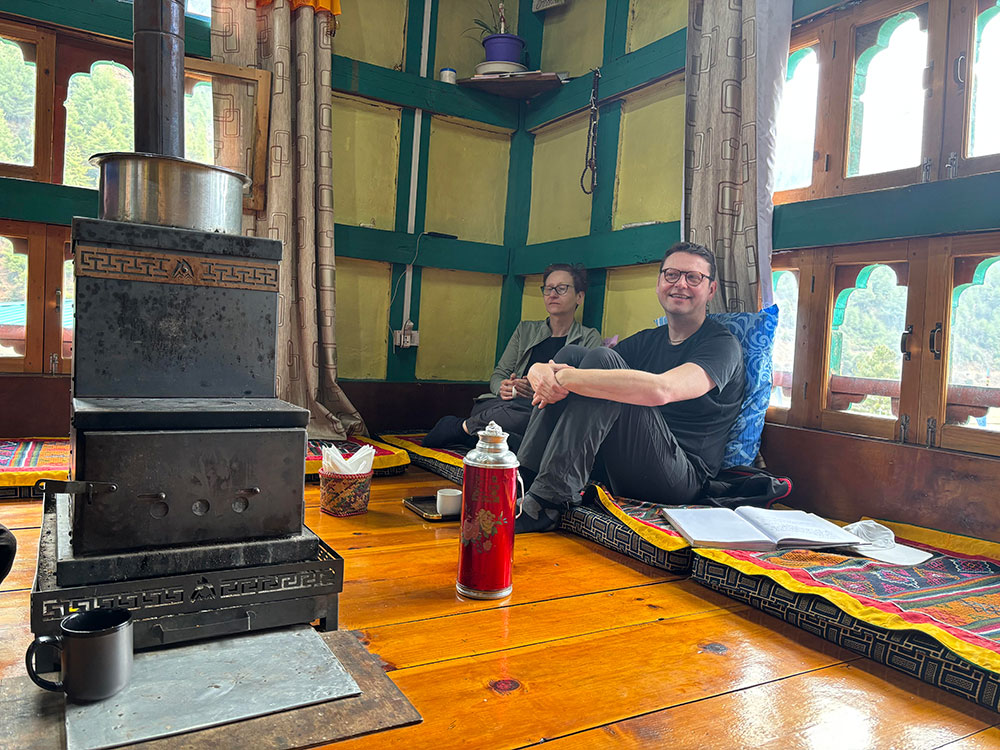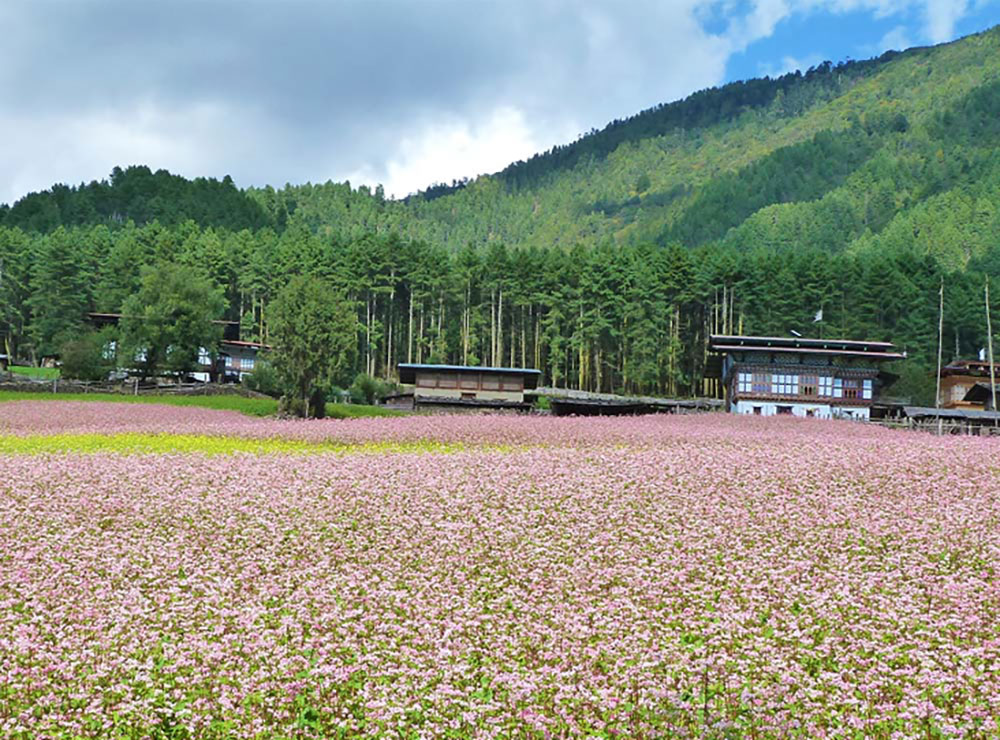Homestays businesses booming across the country, especially in Haa and Paro
Dechen Dolkar
The benefits of tourism, after decades, is finally trickling down to the communities, which is evident from the booming homestay businesses.
Going by the trend of tourists preferring homestays over hotels, particularly in Paro, Haa, Punakha, and Phobjikha, local communities are reaping the benefits of tourism in Bhutan. Owners of homestays in Paro and Haa have reported a rise in tourist arrivals this year. Tourists visiting Bhutan often aim to spend at least one night in a homestay.
The Department of Tourism (DoT) has certified and validated 123 homestays across the country. These accommodations are typically situated in peaceful, less crowded areas, offering visitors the perfect environment for quiet reflection. Staying in a local homestay provides a genuine Bhutanese experience, with warm hospitality and traditional meals.

A homestay in Punakha

A couple from the UK, Rob Tandy and his wife
According to tour operators and tourists, homestays offer unique services and experiences, often at a more cost-effective rate. The Chief Marketing Officer of DoT, Carissa Nimah, said that interest in homestays among tourists is increasing due to various reasons. She said that not only do homestays offer attractive and affordable lodging options, especially in remote areas, but they also fulfil tourists’ desires for authentic travel experiences and cultural interactions.
“Homestays present a unique opportunity for full cultural immersion, allowing visitors to engage with Bhutanese families and learn more about their lives. Guests can try authentic homemade cuisine, build meaningful connections, and gain insights into Bhutanese culture,” she said.
Carissa Nimah also said that the department is vigorously promoting homestays to travel agencies and media outlets worldwide.
Dave Glass from South Africa, who recently visited Bhutan and stayed in a homestay said that bringing his young family to a Bhutanese homestay was initially nerve-wracking for him, but it turned out to be one of the highlights of our trip.
“The host’s house was spotless, the food was delicious, and we had an amazing time,” Dave Glass said. He also said that it was a truly memorable experience that gave him a genuine insight into Bhutanese culture and hospitality. “The warmth and friendliness of our hosts made our stay unforgettable. It was a wonderful night that added a special touch to our journey,” Dave Glass said.
Another couple from the UK, Rob Tandy and his wife, expressed their desire to experience Bhutanese cooking first hand and enjoy fresh vegetables from the garden during their stay at various homestays.
The couple stayed for two weeks in Paro, Haa and Phobjikha homestays.
Homestay owner, Chimi Lham, 55, has been catering to tourists since 2015. She said that there is an increase in visitors at her homestay. Nine groups stayed at her homestay in Haa this year. Charging Nu 1,100 per room with a 10 percent service charge, she finds the homestay business profitable. Relying on homegrown food is an added advantage both for her and the tourists.
Dorji Dema, 41, a homestay owner in Paro Longo, started her homestay in 2015. She didn’t have to market her facility. Tourists and travel agents found about her homestay that provides additional facilities like hot stone baths for tourists.Tourists cooking their own food, in local style, at her homestay is a bonus.
However, homestays in the country are restricted from having more than four rooms. The proprietors of homestays said that they were only permitted to have two rooms earlier, which posed challenges when accommodating two to three guests along with their driver and guide. The wish is to let them receive more guests, especially when tourists are not complaining.
The DoT started homestays, among others to support local businesses and participate in community-based conservation projects.
Tourists’ arrival so far
Bhutan received 25,003 tourists between January and March 31, which is more than double the number in the same period last year. With 14,822 arrivals, March 2024 was the third busiest month since tourism reopened.
The breakdown of visitors in 2024 shows that 60 percent of the tourists originated from India, with the remaining 40 percent coming from US, China, the UK, Germany, Singapore, France, Italy, Malaysia, Vietnam, Australia and Canada.


